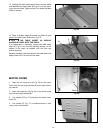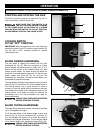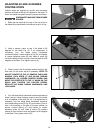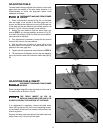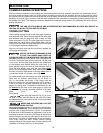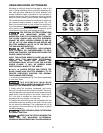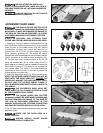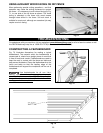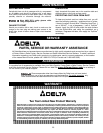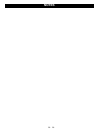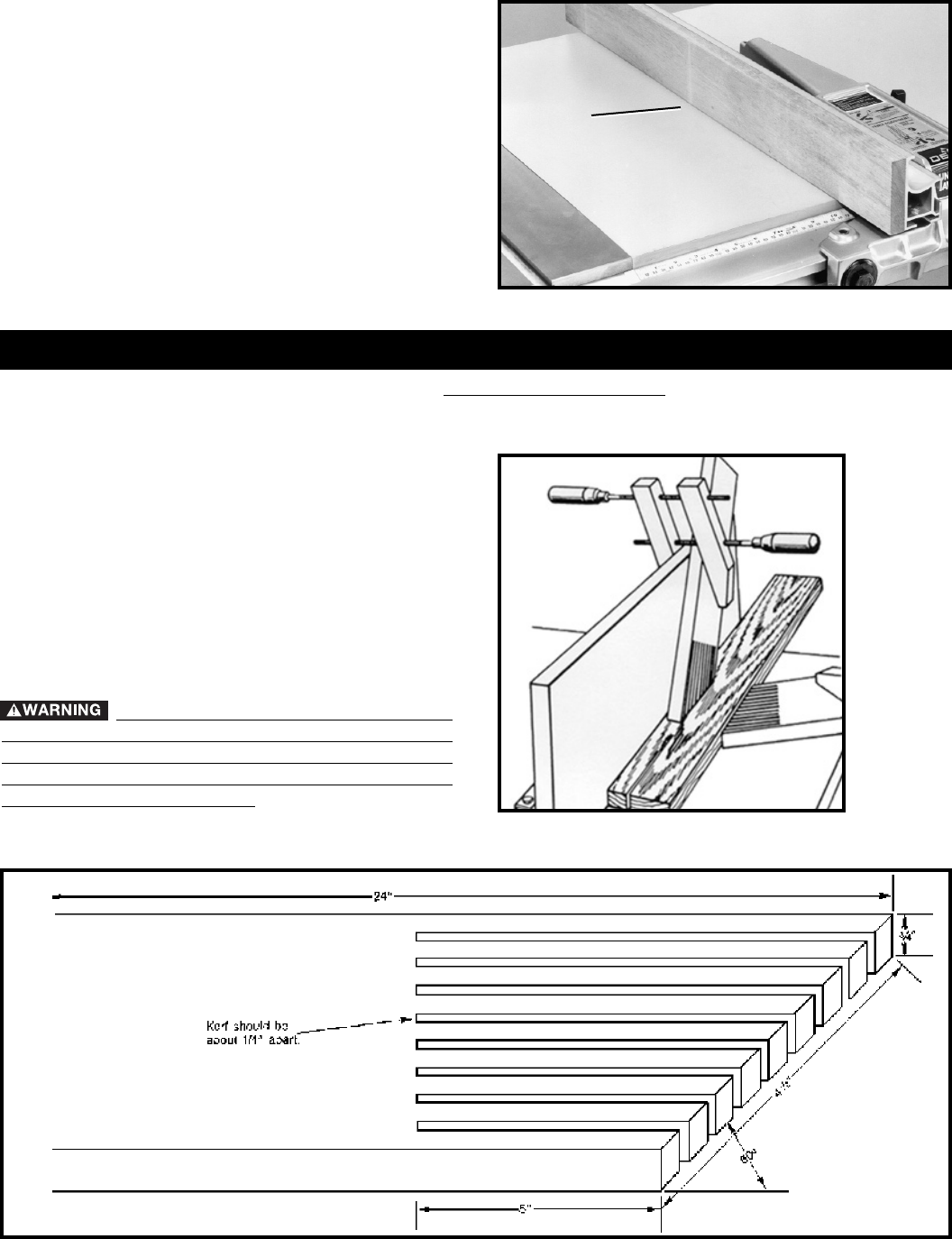
23
CONSTRUCTING A FEATHERBOARD
Fig. 73, illustrates dimensions for making a typical
featherboard. The material which the featherboard is
constructed of, should be a straight piece of wood that
is free of knots and cracks. Featherboards are used to
keep the work in contact with the fence and table and
help prevent kickbacks. Clamp the featherboards to the
fence and table so that the leading edge of the
featherboards will support the workpiece until the cut is
completed.
Use featherboar
ds for all non “thru-
sawing” operations where the guard and spreader
assembly must be removed (see Fig. 72). Always replace
the guard and spreader assembly when the non thru-
sawing operation is completed.
Fig. 72
Fig. 73
USING AUXILIARY WOOD FACING ON RIP FENCE
Fig. 71
A
TROUBLESHOOTING
For assistance with your machine, visit our website at www.deltamachinery.com for a list of service centers or call
the DELTA Machinery help line at 1-800-223-7278 (In Canada call 1-800-463-3582).
When performing special cutting operations – and that
operation may cause the cutting implement to contact
the fence – it is necessary to add a wood facing (A) Fig.
71, to one side of the rip fence as shown. The wood
facing is attached to the fence with wood screws
through holes drilled in the fence. 3/4-inch stock is
suitable for most work, although an occasional job may
require one-inch facing.



